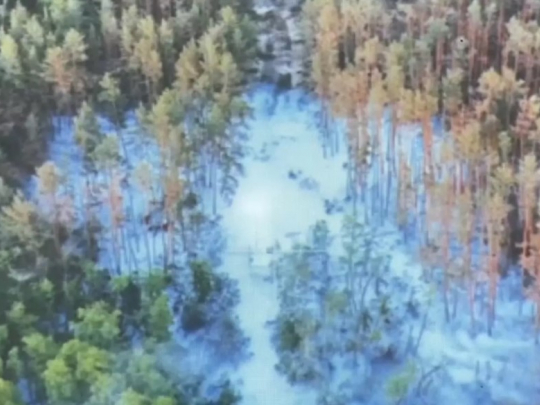N. Korea preparing for space launch?

Pyongyang may be preparing for no less than a space launch, US officials told the media, citing recently obtained satellite imagery of a site around the Sohae Satellite Launching Station – and it may come sooner than later.
Recent movement of components and propellant could indicate that North Korea is considering a rocket launch in the near future, unnamed US officials told Reuters.
“Our concern though is that they do a space-launch, but really it’s the same technology to develop ICBMs,” one of the officials said, adding that the launch could happen in a couple of weeks.
Another official told AFP news agency that there were no signs of a ballistic missile.
“The indications are that they are preparing for some kind of launch… Could be for a satellite or a space vehicle – there are a lot of guesses,” the official said. “North Korea does this periodically – they move things back and forth... There’s nothing to indicate it is ballistic-missile related.”
Concerns that North Korea may be preparing to launch another missile were first voiced by Japan’s Kyodo news agency on Thursday. The report, citing an unnamed Japanese official, said that the launch may be only a week away. The conclusion was based on an analysis of satellite imagery of North Korea’s Tongchang-ri missile test site on its West coast, where the Sohae Satellite Launching Station is located.
South Korea’s Yonhap news agency has reported that there had been screens established at key locations, possibly aimed at countering spy satellite surveillance. Automated activity and rail set-ups have been observed, the agency said, citing government sources.
A South Korean Defense Ministry spokesman refused to comment on whether there were any on-going preparation activities, but pointed out that North Korea had previously give a heads-up before launching long-range rockets and warnings about its navigation activity.
“We believe that North Korea could launch grave provocations by surprise – without pre-warning – from now on,” South Korean defense ministry spokesman Kim Min-seok said. “In the past, North Korea always fired a long-range missile ahead of a nuclear test. But since it didn’t this time, we are concerned that it could launch one.”
North Korea says that it is entitled to manage its own space program and its rocket launches are intended to send satellites into space.
US Navy Admiral Harry Harris, commander of US Pacific Command, said earlier that he might be looking into changing a US Aegis missile defense test site in Hawaii into a combat-ready facility so that the US could better protect it from ballistic missile attacks. Harris also suggested that a mobile missile system known as the Terminal High Altitude Area Defense should be introduced in South Korea, emphasizing that the proposal should be discussed between the two countries.
The last space launch by North Korea took place in 2012, when, according to its state-run news agency, DPRK, the Kwangmyongsong-3 weather satellite was put into orbit. However, the West suspects that this was a veiled ballistic missile test.
Meanwhile, on Thursday, the US Senate Foreign Relations Committee approved legislation that would impose stricter sanctions on North Korea in response to its fourth nuclear test, which took place in early January. An independent investigation is still working to confirm whether it was, indeed, a hydrogen bomb that had been tested, as Pyongyang claimed. However, it has been confirmed across the world that a powerful test launch of some sort took place.
The new measures would further sanction North Korea for its nuclear program, human rights record, and cyber activities.
North Korea has said the test had been carried out “neither to ‘threaten’ anyone nor to ‘provoke’ someone for a certain purpose.” However, it then claimed it was ready to detonate a hydrogen bomb “capable of wiping out the whole territory of the US all at once.”
Pyongyang first announced that it had created a nuclear bomb in 2005. Pyongyang has conducted four known underground tests since then, including the most recent one. The first, which was conducted in 2006 at the Punggye-ri Nuclear Test Site in the northeast of the country, involved explosives of five to ten kilotons and was recorded by seismic stations in Russia, China, Japan, South Korea, and Australia.
The second and third tests were conducted in May 2009 and January 2013, which saw an increase in the power of the devices tested of 10 to 20 kilotons of TNT respectively. North Korea’s 2013 test triggered sanctions from the UN Security Council, which immediately put restrictions on the country’s banking, trade, and travel.
The UN Security Council has been working on a new sanctions resolution on North Korea. Talks between the US and China were held on Wednesday in Beijing, in part, to discuss the matter. Although the two countries agreed that a strong resolution was necessary, Beijing slammed Washington’s proposal to expand sanctions on North Korea. However, US Secretary of State John Kerry and China’s FM Wang Yi said that the details would be resolved in the upcoming talks at the UN Security Council.
- Source : RT















